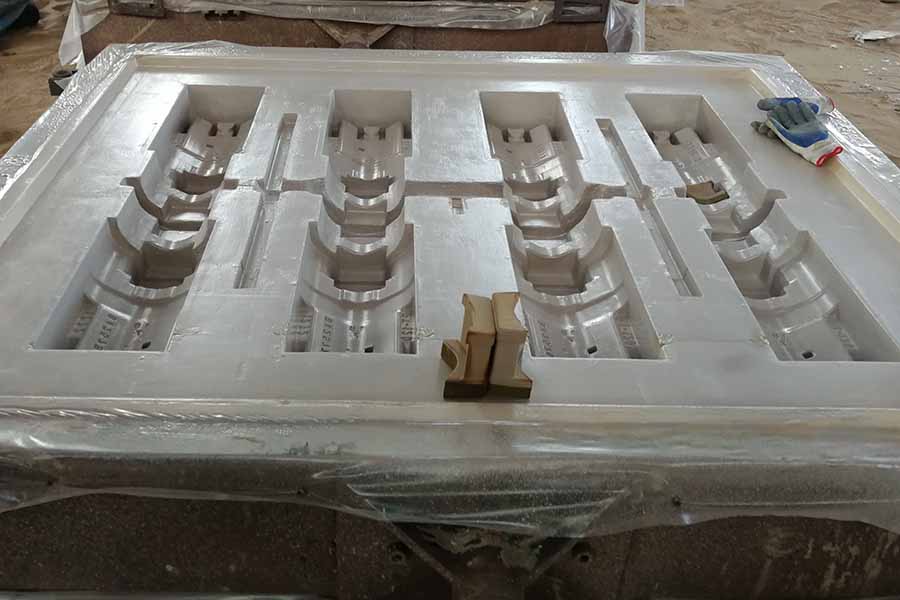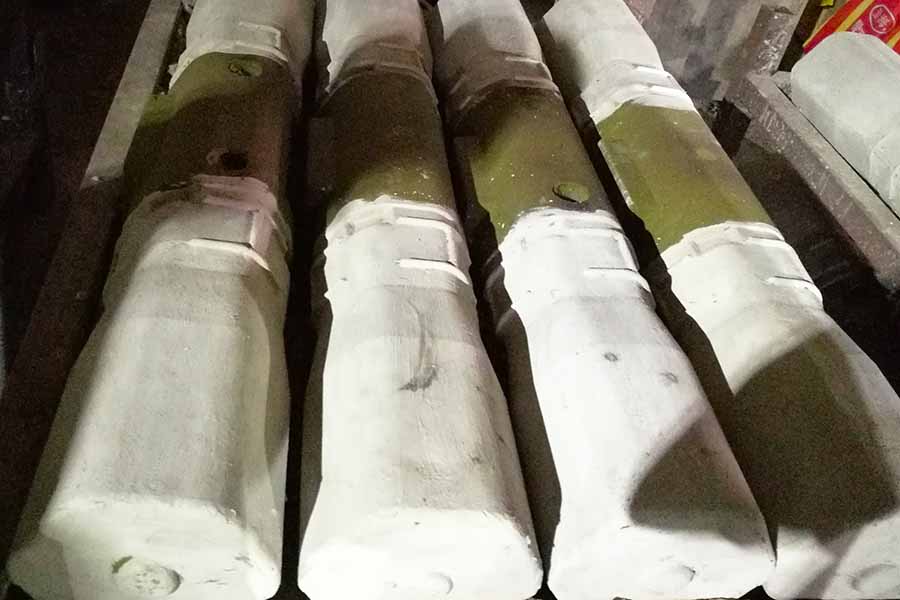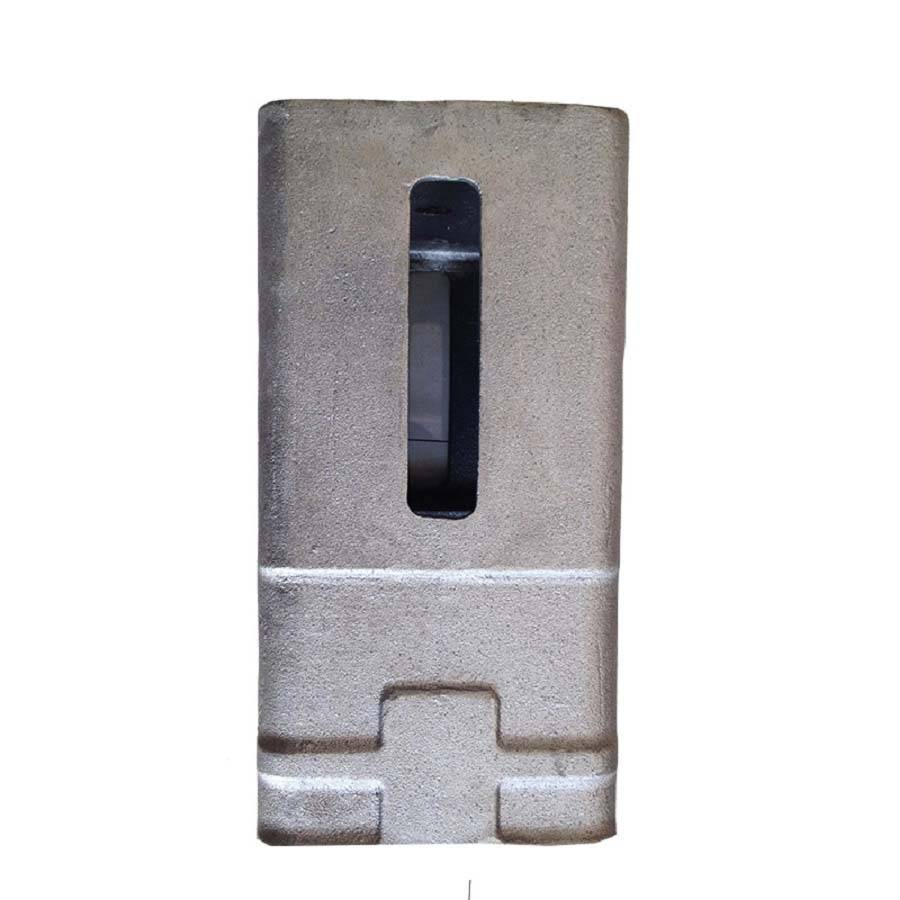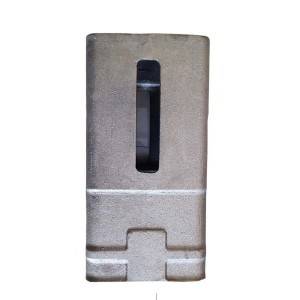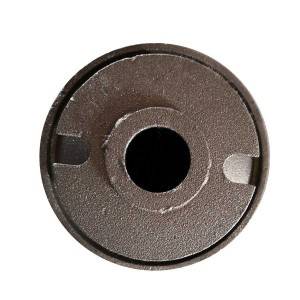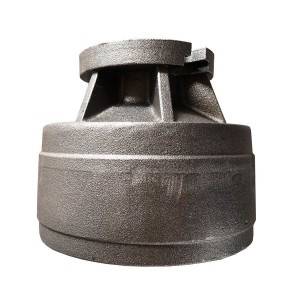Cast alloy steel v process castings mean the casting parts produced by vacuum casting process with materials of cast alloy steel.
Vacuum moulding casting, is also called negative pressure molding method, vacuum sealing molding method, or V process for short. This is a relatively new type of physical modeling method. The negative pressure molding method uses the pressure difference between the inside and outside of the mold to fasten the dry and loose sand particles together to obtain a mold with a certain desired shape and a certain strength. Cast steel can be divided into cast alloy steel and cast carbon steel according to its chemical composition, and can also be divided into cast tool steel, cast special steel, engineering and structural casting and cast alloy steel according to its characteristics. Casting alloy steel can be divided into cast low alloy steel (the total alloy elements are less than or equal to 5%), cast alloy steel (the total alloy elements are 5% to 10%) and cast high alloy steel (the total alloy elements are greater than or equal 10%). Wear-resistant alloy steel sand castings are the casting parts produced by sand casting process made of wear-resistant alloy steel. At RMC Foundry, the main sand casting processes we could use for wear-resistant alloy steel are green sand casting, resin coated sand casting, no-bake sand mold casting, lost foam casting, vacuum casting and investment casting. The heat treatment, surface treatment and CNC machining are also available at our factory as per your drawings and requirements.
Vacuum casting allows the production of small batches of high quality mouldings in a range of polyurethane resins that replicate the performance of engineering plastics without the high costs of hard tooling associated with injection moulding. The process starts with making a mould by encapsulating a master model in two-part liquid silicone rubber. A vacuum is then applied to remove any trapped air, then it is cured in an oven. Master models can come from a number of 3D printing technologies including stereolithography. Once the silicone is cured, the mould is cut open to form a split line, the master model is removed which leaves a mould cavity perfectly replicating the master model. To make a part, the mould segments are put back together, secured, pre-heated and placed in the vacuum casting system chamber. Two or three part resin is weighed, pigment added if required and the resin parts are placed in the automatic mixer of the vacuum casting system. At this point, the vacuum casting system takes over the process to mix the resin components and vacuum cast the model. Once this is complete the casting is cured. After curing, the mould segments can be separated and the part removed. All that remains is for the casting parts to be trimmed and finished as required.
▶ Vacuum Casting Materials:
• Carbon Steel: Low Carbon Steel, Medium Carbon Steel and High Carbon Steel from AISI 1020 to AISI 1060.
• Cast Steel Alloys: ZG20SiMn, ZG30SiMn, ZG30CrMo, ZG35CrMo, ZG35SiMn, ZG35CrMnSi, ZG40Mn, ZG40Cr, ZG42Cr, ZG42CrMo...etc on request.
• Stainless Steel: AISI 304, AISI 304L, AISI 316, AISI 316L and other stainless steel grade.
• Brass & Copper.
• Other Materials and Standards on request
▶ V Process Casting Capacities:
• Max Size: 1,000 mm × 800 mm × 500 mm
• Weight Range: 0.5 kg - 100 kg
• Annual Capacity: 2,000 tons
• Tolerances: On Request.
▶ Inspecting V-Process Casting Components:
• Spectrographic and manual quantitative analysis
• Metallographic analysis
• Brinell, Rockwell and Vickers hardness inspection
• Mechanical property analysis
• Low and normal temperature impact testing
• Cleanliness inspection
• UT, MT and RT inspection
▶ Vacuum Casting Procedures:
• The pattern is covered tightly by a thin sheet of plastic.
• A flask is placed over the coated pattern and is filled with dry sand without bind.
• The second flak is then placed on top of the sand, and a vacuum draws the sand so that the pattern can be tight and withdrawn. Both halves of the mold are made and assembled in this way.
• During pouring, the mold remains under a vacuum but the casting cavity does not.
• When the metal has solidified, the vacuum is turned off and the sand falls away, releasing the casting.
• Vacuum molding produces casting with high-quality detail and dimensional accuracy.
• It is especially well suited for large, relatively flat castings.
▶ Post-Casting Process
• Deburring & Cleaning
• Shot Blasting / Sand Peening
• Heat Treatment: Normalization, Quench, Tempering, Carburization, Nitriding
• Surface Treatment: Passivation, Andonizing, Electroplating, Hot Zinc Plating, Zinc Plating, Nickel Plating, Polishing, Electro-Polishing, Painting, GeoMet, Zintec.
• Machining: Turning, Milling, Lathing, Drilling, Honing, Grinding.
▶ Why You Choose RMC for V (Vacuum) Process Casting Components?
• Easy recovery of the sand because the binders are not used
• Sand does not require mechanical reconditioning.
• Good air permeability because there is no water is mixed with sand, therefore less casting defects.
• More suitable for large scale castings
• Cost effective, especially for large castings.
